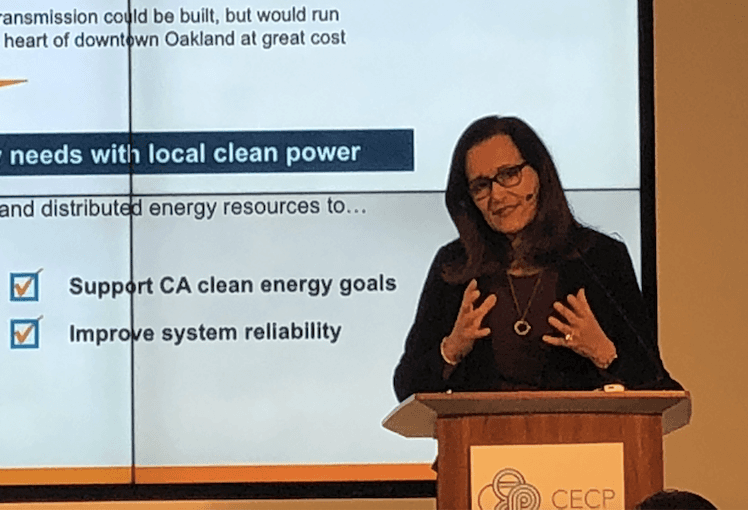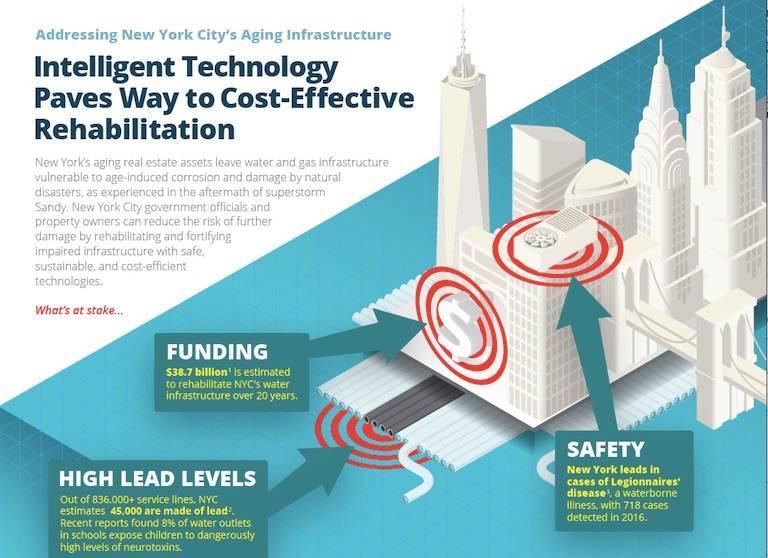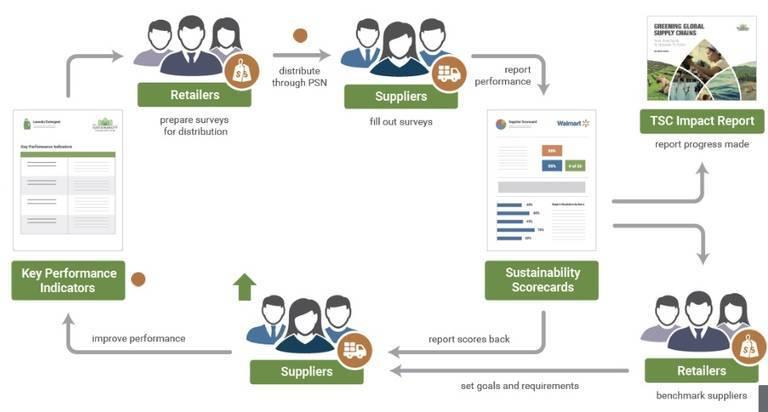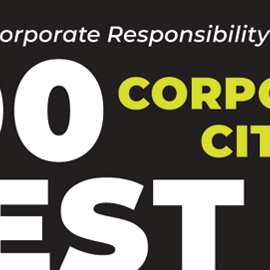Beyond the Keyboard: How to Think Creatively About Social Activism


By Emily Slade
Squaw Valley Ski Resort to be 100% Renewable Powered


By Kirsten James
The dozens of chairlifts and gondolas at the Squaw Valley ski resort ferry as many as 50,000 skiers an hour up mountainsides, some traversing more than a thousand feet of elevation in about 20 minutes.
Delivering skiers to some of the highest summits in the Lake Tahoe section of the Sierra Nevada mountains, sometimes in blizzards or sub-freezing temperatures and high winds, is not a task Squaw leaves open to failure. It can’t risk a power outage that would stop the chair lifts and leave skiers hanging for any longer than a few seconds.
So, Squaw has backup generators always at the ready. But the current technology of diesel run generators with heavy emissions doesn’t fit very well with Squaw’s environmental mission of “preserving our winters and alpine environment for current and future generations” nor help forward Squaw’s goals to be 100 percent renewably powered.
To solve the conundrum of diesel generators, Squaw and its utility Liberty Utilities Co. recently entered a venture with Tesla Inc. to purchase and install a lithium-ion battery storage system able to store up to 8 megawatts of solar-generated power to be available to cover power outages or peaks in energy demand.
Now Squaw is slaloming along in its race to be 100 percent renewable powered by December, a goal which would make it the first among major U.S. ski resorts.
I visited Squaw Valley on a recent “spring” day. Expecting wild flowers peeking through melting snow, I was met instead with near white-out conditions as snow fell thickly.
The conditions underscored for me what fierce elements Squaw or any ski resort deals with. Its offer of outdoor adventure to skiers and snowboarders is heavily dependent on nature - and subject to the changing whims of nature. Wind, heavy snow - or lack of snow, rain, hail, biting cold temperatures - or overly warm temperatures, and drought all factor into daily operations at a ski resort. It’s clear that Squaw’s operations managers, electricians, mountain maintenance staff, technicians, ski patrols and other employees have learned to be keenly aware and responsive to weather changes and new snow conditions.
They’re also aware of Squaw’s dependence on electricity and its potential role, consequently, in reducing electricity generated emissions. With chair lifts, gondolas, lights, snow-making machines, lodges with hundreds of kitchen appliances and entertainment venues all depending on power, electricity follows just after snow and mountain inclines as essential ingredients for a successful ski resort.
It’s the intersection of those needs, electricity plus snow, that propels Squaw to seek renewable power and operate in ways to minimize its greenhouse gas emissions. The storied ski resort which hosted the 1960 winter Olympics has been an advocate of operations and policies that would help stem climate change so it can assure snow keeps falling and the mountains remain pristine.
“Squaw is working to transition to 100 percent renewable energy because we are focused on opportunities to reduce our carbon footprint as well as lead by example,” said Michael Gross, director of environmental initiatives at Squaw Valley Alpine Meadows.
“It’s achievable because of our strong relations with our forward-thinking utility provider, Liberty Utilities. We told them what we want to accomplish and the immediate timeframe and they delivered.”
Liberty has been deploying solar arrays in addition to working with Squaw on the battery storage system. It hopes to be able to provide renewable power to much of nearby Olympic Village as well as to the ski resort itself. “Our commitment helps us and them: We get to 100 percent renewable and they can start to develop new renewables,” Gross said.
Climate change has become a cause for many in the ski industry, with Squaw among those out front on the issue. The North American and European ski industries have watched the average annual snow fall decline over the years and with it ski days and skiers, according to Protect Our Winters, a ski industry climate action group.
Stopping climate change is so important to Squaw that it is active in state and federal climate mitigation advocacy efforts with Ceres and others. It even offers its skiers the use of “advocacy phone booths” around its Squaw Valley and Alpine Meadows resorts so skiers can call their legislators and Congressional representatives to voice concern about climate change and support policies that would stem greenhouse gas emissions and ensure that this favorite pastime doesn’t become a thing of the past.
As Squaw and Liberty Utilities work towards transitioning the resort to100 percent renewable power by year-end, Squaw executives say they are certain that the whole of California can do the same by 2045.
When I met with Gross and CEO Andy Wirth, who has since retired, they talked about Squaw’s whole-hearted support of the California Senate Bill 100, also known as the “100 Percent Clean Energy Act,” which would accelerate the state’s renewable Portfolio Standard to 60 percent by 2030 and set a goal for the state to receive 100 percent of its electricity from carbon free sources by 2045.
The bill was introduced into both the Senate and the Assembly last year, the first year of a two-year session, and is expected to be taken to a vote between now and September.
SB 100 has many proponents, including 28 major companies and 20 institutional investors that joined Ceres in submitting letters to the state legislature expressing support for passage of the bill. Along with key businesses, other proponents are environmentalists, faith groups, universities, individuals, many non-profit organizations and California Governor Jerry Brown.
Squaw has taken up advocating for policies that would help reduce greenhouse gas emissions because ski resorts consider climate change the bane of their existence. For the past two years, exceptionally dry winter months early in the season were followed by bouts of extremely heavy snow. Both those conditions cause challenges to ski resorts. And proceeding those years were drought plagued years of too little snow to provide decent ski seasons. Squaw has snow making machines so it survives and even prospers in dry years. But small ski resorts need to close their doors when it doesn’t snow. That means financial hardship and job losses. And for skiers it meant little chance to engage in a beloved sport.
As U.S. Olympic Nordic skier Jessie Diggins implored the world during the 2018 winter Olympics to save winters and save snow by fighting climate change.
The Protect Our Winters campaign calculates that more than 20 million people went skiing, snowboarding or snowmobiling in the winter of 2015-2016 adding about $20.3 billion in economic value to the U.S. economy by spending at ski resorts, hotels, restaurants and travel. On low snow years, fewer people ski and snowboard, reducing that spending and its ripple effects by about $1 billion and resulting in 17,400 fewer jobs, according to Protect Our Winters.
Gross said that after Squaw reaches its goal of transitioning to 100 percent renewable power, it intends to help the rest of Tahoe go after that goal, starting with the North Tahoe community.
“Our hope is that other businesses will work with their utility providers to push for more renewables opportunities. Private industry needs to support the renewables efforts; we can’t wait for our elected officials to make it happen,” he said.
Waiting for elected officials to lead this transition might make it too late for any hope to preserve the amounts of snow fall that skiing needs and skiers want.
Kirsten James is Director of California Policy, Ceres
Photo: Squaw Valley Alpine Meadows
What’s Really Green – A Look at Beef, Part V – How Can You Prove It? (i.e., Filter Out the Bull)


By Jonathan Gelbard, Ph.D.
Previously, I explored impacts of poorly-managed grazing operations and feedlots, and triple bottom line benefits of good management. For buyers sourcing beef from well-managed ranches and farms, the next question for evaluating the credibility of related claims is, “How Can You Prove It?”
Here I provide an overview of types of certification and verification programs that you can use to distinguish credibly well-managed operations – and that producers and brands can use to verify their sustainability-related marketing claims. This is not a review of labels, but rather a summary of the current certification/verification landscape for beef.
Certifications & Other Eco-Labels – What Do They Really Mean?
First, it’s important to remember the limits of what eco-labels mean: each signifies compliance with a suite of requirements, which are often codified in a certification standard. For USDA labels (e.g., Organic certification, and process verifications such as Raised Without Antibiotics), USDA rules detail requirements. To understand what eco-labels mean, carefully read underlying standards or rules to determine whether they address the issues you care about.
Next, research how programs work – particularly scoring requirements. There are often “critical criteria” that operations must comply with – in some cases immediately, in others after a brief (e.g., 1-3 year) transition period. For non-critical criteria, it is not mandatory for producers to meet all of them to qualify for most labels – just enough to achieve the minimum score required. Thus even for certified beef, all the issues you care about may not be addressed – yet.
“Yet” because well-designed certification programs have continuous improvement requirements, which incentivize producers to remedy “issues of concern” that auditors identify. This is smart program design because it recognizes that most ranchers operate on thin margins and are extremely time-constrained, so it’s important not to let the perfect get in the way of the good. Collaborating with producers to achieve continuous improvement goals also shrinks the change of transitions to good management into small, confidence-building “wins” on the journey to (and beyond) certification.
Types of Certification & Verification Programs
There are different types of certification and verification programs, which vary in diversity of issues addressed (e.g., programs focused on single issues such as animal welfare, grassfed, or “raised without antibiotics”; organic; industry-affiliated programs; and comprehensive independent third-party sustainability certifications).
Single Issue Labels: Many labels focus on a specific issue of concern to consumers. A few examples include:
1) Raised Without Antibiotics and Hormones: Programs for verifying antibiotics-related claims vary in meaning, from animals that are “never-ever” fed antibiotics (if they get sick, they are removed from the program), to animals that only receive antibiotics when sick, not for “non-therapeutic” purposes (usually meaning when feedlots routinely provide antibiotics to animals that are not sick – often in feed or water – to prevent diseases and/or promote growth). Most of the below programs contain restrictions on antibiotics and growth promoters (including hormones and controversial beta-agonists), and USDA has process verification programs for claims of “raised without antibiotics” and “raised without the use of hormones.”
2) Certified Grassfed (e.g., the Grassfed Ruminant standard of the American Grassfed Association, certified grassfed by A Greener World (AGW), the discontinued USDA Process Verification for grassfed claims): These and other programs support “grassfed” labels, which as I described in Part II of this series may not mean what you picture. Some grassfed programs also include guidelines safeguarding animal welfare and/or land health.
3) Animal Welfare Approved (AWA) by AGW, Certified Humane, WholeFoods Five-Step Program: These and other animal welfare labels distinguish beef produced on operations that treat animals humanely, ensuring that they live quality lives with only one bad day at the end. They verify that farms meet thorough standards of animal welfare (e.g., Certified Humane’s beef cattle standard).
AWA’s standard for beef cattle and calves is rigorous, but its reach is limited because it requires continuous outdoor pasture access (so generally applies to operations that sell into grass-fed/pasture-raised supply chains, about 1-4% of U.S. beef sales). WholeFoods Global Animal Partnership (GAP) program rates meat according to five “steps” of increasingly stringent animal welfare requirements. However, the retailer’s beef purchasing standards include surprisingly few incentives to curtail water and air pollution, threats to wildlife and biodiversity, climate disruption, and mistreatment of farmers and workers.
4) Wildlife-Friendly, Predator-Friendly, Bird Friendly: These and other wildlife-related certification programs recognize operations that meet Wildlife-Friendly and Predator-Friendly standards, and Audubon’s new “Bird-friendly” conservation ranching standard. They distinguish ranches and farms that have implemented wildlife conservation management practices, and generated related results. As with the above programs, these labels are limited in scope, though some offer criteria or modules that address animal welfare and broader environmental sustainability concerns.
Organic & Regenerative Organic: The USDA Organic label distinguishes beef produced on ranches certified as meeting the Pasture Standard for Ruminant Organic Livestock. Requirements (summarized here) are largely inputs-based: e.g., no synthetic pesticides or fertilizers, no antibiotics or hormones, no genetically modified or other prohibited feed ingredients. They also include a pasture management plan that addresses priorities such as soil health, water quality, pasture access, animal welfare, and well-managed grazing. No explicit requirements address cattle’s climate-disrupting methane and nitrous oxide emissions (though soil health, organic feed, and requirements including prohibitions against synthetic fertilizer promote carbon sequestration and reduce emissions). There are also no mandates for conserving biodiversity – the program provides related recommendations in its Guidance for Natural Resources and Biodiversity Conservation
Producers and buyers are aware of the gaps in the Organic pasture standard and some have expressed interest in an “Organic-Plus” label. The Rodale Institute, Patagonia, Dr. Bronner’s and others are developing a “Regenerative Organic” standard that starts with USDA Organic certification, and adds requirements for Soil Health and Land Management (mostly based on NRCS conservation practices, and soil health testing), Animal Welfare, and Farmer and Worker Fairness.
Industry Affiliated Programs
Several frameworks backed by the beef industry offer more or less comprehensive definitions of “sustainable” beef, guided by the Principles and Criteria of the Global Roundtable on Sustainable Beef. The Canadian Roundtable on Sustainable Beef recently released a certification standard that is broad in scope, offering criteria in the principle areas of Natural Resources, People and the Community, Animal Health and Welfare, Food, and Efficiency and Innovation.
Natural Resources indicators require management planning in areas including grazing and nutrient management. Plans must address considerations such as soil health, water quality, air quality, climate-disrupting emissions, native ecosystems, and habitat for wildlife. The CRSB standard seems designed to “raise the floor” of management quality by recognizing continuous improvement of conventional producers. It could serve as a “stepping-stone” program that encourages certified producers to continue their sustainability journey via partnerships with independent, third-party sustainability certifiers.
The U.S. Roundtable on Sustainable Beef (USRSB) emphasizes that it, “will not mandate standards nor verify individual stakeholder performance”. Rather than offering label, it aims to “move the curve” advancing sustainability of the entire U.S. beef industry by developing indicators and metrics to track progress, and self assessment guides to assist producers in improving results. This is a similar approach to new USRSB partner, Field to Market, which monitors progress of priority indicators to advance sustainability of commodity crops including corn, a common livestock feed.
Comprehensive Sustainability Certifications: Independent third-party sustainability certifications such as those offered by the Rainforest Alliance (which uses the Sustainable Agriculture Network (SAN) standard) and the Food Alliance distinguish the broadest array of positive outcomes. The Rainforest Alliance certifies tropical operations, while the Food Alliance – having certified over five million acres of U.S. farms – is supporting the introduction of the Grasslands Alliance’s outcomes-based sustainability standard, developed following ISEAL protocols.
Each of these comprehensive programs contains “Principles” that include some combination of (language varies slightly by standard):
- Effective Planning and Management System;
- Wildlife Habitat & Biodiversity Conservation;
- Natural Resource Conservation (including soil health conservation and management, vegetation health, water quality and conservation, integrated pest management, and waste management);
- Improved Livelihoods and Human Well Being; and
- Humane Animal Care.
The Grasslands Alliance standard is the first to include “Climate Smart Ranching & Farming” at the principle level, and the latest SAN standard features a “Continuous Improvement Area” of “Energy and Greenhouse Gas Emissions”. Protocols of both the Grasslands Alliance and the Food Alliance include stringent “Nutrient Management” requirements that cover not only fertilizer application, but also manure management practices. The Grasslands Alliance is now inviting partners to collaborate on developing innovative certification, producer support, and monitoring and evaluation programs.
Also under development is the Savory Institute’s Land to Market initiative. This program aims to positively impact 1 billion hectares (2.5 billion acres) of grasslands through Holistic Management by 2025. Through a partnership between the Savory Institute and Michigan State University, the program will implement an “Ecological Outcome Verification” tool that involves, “robust measurements of key indicators of ecosystem health.
Conclusion
If you’re confused at this point, you’re not alone! One key takeaway is that you need to read a labeling program’s standards/rules to understand whether and how well it addresses the issues you care about. It’s a lot of work, which is why many beef buyers (myself included) feel better served by comprehensive programs that cover all the issues we care about in a single label.
The certification landscape is also challenging for producers, who I’ve heard lament various versions of, “how many labels do I need to address all of my customers’ concerns? Every label is an application I need to fill out, an inspection I need to spend time on, and a certification fee I need to pay.”
That’s a good lead to the topics I’ll explore next: what are key barriers to advancing sustainability in the beef sector, and what are solutions to each barrier?
Jonathan L. Gelbard, Ph.D. is Principal and Senior Conservation Scientist at Conservation Value Solutions. As a researcher, writer, speaker, and advisor, he digs deep to identify root causes of problems, and catalyzes transformative solutions. Dr. Gelbard was Senior Scientist at the Grasslands Alliance, a partnership between NGO’s, certifiers and ranchers that developed and piloted a comprehensive certification standard for U.S. and Canadian beef cattle and bison grazing operations. The Grasslands Alliance is currently fundraising to support its development of certification and continuous improvement programs. Click here to learn more.
PG&E Corp. CEO Breaks Down Barriers, Shores Up Clean Energy for California


Geisha Williams, the first Latina CEO of a Fortune 500 company, is on a mission to deep clean PG&E's power mix. Given that electricity is responsible for 28 percent of U.S. greenhouse gas emissions and PG&E is the 5th largest utility in the U.S. based on market value, these are not table stakes.
PG&E is one of the cleanest utilities in the country so she has a head start. In 2016, the San-Francisco-based utility was first in the country for millions of megawatts of renewables sold and second for renewables as a percentage of sales. PG&E now derives 79 percent of its energy from renewable sources and is bullish on more. Williams, the child of Cuban political refugees, is quite literally leading the clean energy revolution.
Electric utilities have historically used long term planning – on the order of 10, 20, and 30 year horizons – to procure power contracts. Long term planning has historically been a key component of managing costs, maintaining the electric grid, and keeping electricity prices stable as a regulated monopoly.
Solar, wind power and battery technology have come along much more quickly than one might have predicted 30 years ago, which leaves the regulated monopolies in a tough bind. They want to provide the clean energy customers desire, but in many cases they may be locked into long term contracts for dirtier or less efficient energy than is currently available on the market. Small-scale solar is reaching cost parity with the rates offered by utilities and many companies are turning to solar installations as an affordable way to reduce carbon impact.
PG&E is in a better situation than many utilities, having jumped on the clean energy revolution earlier than some competitors. But it still faces the same challenging operating environment of heavy infrastructure costs and legacy contracts.
Williams wisely chooses to see this as a glass half full. At the recent CECP CEO Investor Forum in San Francisco, she opened inspirationally, “We have an amazingly powerful convergence of three-things: forward-looking policy [at the state level in California], consumers eager for change and a technological revolution. Few other companies are better situated than we are.”
She pointed to PG&E’s historical focus on safety and affordability as keys to taking advantage alongside the electric grid, which she called an “enormously valuable asset. We believe it is fundamental to the revolution and key to delivering safe, reliable, affordable clean energy to nearly 16 million Californians.”
It’s an interesting perspective. The electric grid was an incredible innovation. It brings power hundreds of miles from mammoth energy generating centers to individual residences. The scale of today’s grids used to be their biggest asset because they allow the utility to switch energy providers with the flick of a button without interrupting the consumer experience. And the scale keeps costs down.
But, recent technological advancements in solar and wind energy capture, battery storage technology and micro grids, there might be a better way to mash the potatoes. If we were to start from scratch today, it is doubtful that we’d rely on electric grids so large a bad storm can take out power on the whole eastern seaboard.
These moving forces, and staying ahead of them, is clearly on PG&E’s radar. Part of the challenge will be broadening the definition of “sustainable energy” beyond just being carbon free. Williams explains, “It’s not sustainable if it’s not safe, reliable, affordable and clean.” Safety and reliability are bedrocks of the grid model and one of PG&E's clear competitive advantages.
Over the past 20 years, PG&E has largely been a partner with the state as it moves to reduce climate change emissions from electricity. And this partnership, along with a clear eye toward the technical innovations that will impact customer energy needs, will keep PG&E and “Big Power” from gradually losing market share.
According to Williams, PG&E was the first company in the utility industry to make a formal commitment to action on climate change. The state passed landmark AB32 in 2005 to reduce GHG emissions to 1990 levels by 2020 and shortly thereafter set the state’s renewables targets at 33 percent by 2020. PG&E met that goal three years early. The state has continued to ramp up renewables targets, and PG&E has continued to meet and exceed the goals it sets to help the state comply. California is now requiring 50 percent of the state’s electricity to be renewably generated by 2030. With PG&E already at 79 percent renewables, the clean energy leader thinks it can get the state to 55 percent renewables by 2031. Williams is not overstating things when she says “It’s not a transition, it's a transformation.”
The utility is projecting a massive shift to electrification in transportation as the costs of electric vehicles continue to come down and the state continues to incentivize low carbon transport.
The company is well positioned to capitalize on the projected two million clean vehicles that will be seeking to power up via the grid by 2030. PG&E is investing in charging infrastructure with 7,500 public charging stations planned in its service area to support and encourage this transition.
With two times more carbon-free and renewable energy than us average (79 percent vs. 38 percent), Williams plans for PG&E to be an example of a profitable transition for utility companies, not a “cautionary tale of costs run amok.”
With Williams at the helm it seems quite possible.
World business leaders to share new sustainable vision in June


Ethical Corporation is delighted to confirm that the Parliamentary Under Secretary of State for the Environment UK Government and CEOs from; United Nations Global Compact, Allianz, L’Oréal, Oxfam, VF Corp, LEO Pharma, GRI, Hermes Investment, American Institute of AI, KEMET Corporation, IIRC will share their visions for a sustainable and transformational business at the 17th Responsible Business Summit Europe (London, 13-14 June).
This event is Europe’s must-attend business conference where 500 leading business execs will share new ideas and form new partnerships to drive transformational change.
New speakers include:
- Parliamentary Under Secretary of State for the Environment UK shares Government’s plans for Environmental regulation in a post-Brexit Britain
- United Nations Global Compact CEO shares ideas for activating the SDGs as the driver for business strategy
- L’Oréal CEO will lead on practical insights towards climate change & supply chain re-development opportunities
- LEO Pharma and Oxfam CEOs discuss how to drive transformational change within your industry through collaboration with Government, NGOs and your rivals.
- Allianz and Hermes CEOs share ideas for engaging investors to think long-term
There is no other event that boasts such a senior and corporate lead speaker line-up. Click here to see who will be sharing their visions, ideas and strategies
Media Contact:
Candy Telani Anton
Head of Europe
+44 207 375 7162
Preparing for the Next Sandy: Making New York More Resilient in the Age of Superstorms


By Dan Squiller
Ask anyone who lives in New York City, New Jersey or any of the twelve states affected by Hurricane Sandy back in 2012 and they will likely have a painful story about how the superstorm impacted their family along with their friends and neighbors. The economic estimates pegged the storm at $65 billion in damages.[1] The human toll was far greater, as families lost loved ones, homes and heirlooms were destroyed, and businesses both large and small were decimated. And, what many people don’t realize about the devastation is how much of the flooding in the aftermath of the storm could have been prevented with modern drain rehabilitation.
As climate change continues to impact cities and communities everywhere in the world, weather trends strongly suggest that superstorms such as Sandy will only get worse. While technology has not come up with a solution to prevent the next superstorm there are things we can to do to make our own homes, businesses, cities, counties, and country more resilient.
In the New York City metro area, this could not be more urgent. Hurricane season is around the corner, and much of the Big Apple’s residential and commercial structures have not been updated or fortified for 100 years or longer.
As New York Congressman Paul Tonko put it to the Associated Press, “We trade in our cellphones after one year. We trade in TVs because we want a bigger screen. But we're content to live with more-than-100-year-old pipes.”[2]
The Center for an Urban Future estimates that 15% of city water mains are more than 100 years old.[3] The average age of city water mains is 69 years old. The average NYC sewer main is 84-years old.
While investment will be required for upgrading the city’s infrastructure, there is also a cost of inaction. For example, an estimated 20% of the city’s treated water leaks out of decaying city pipes before ever reaching homes and businesses.[4] Meanwhile, the City is forced to address hundreds of water main breaks every year, most on an emergency basis driving up costs even further.
Adding insult to injury, New York City has the unfortunate distinction of being the nation’s leader in Legionnaires’ disease, a water born illness. Water safety has become a serious issue as it’s estimated that the City has 45,000 lead pipes and recent reporting indicates that 8% of water outlets in schools expose children to dangerously high levels of neurotoxins. 5, 6
If water safety alone was not reason enough to act, there is also the perilous impact of future superstorms, caused by our planet’s changing climate. The fact of the matter is that inaction becomes even more costly when major storm events strike. We don’t need to look any further back into history than the recent subway delays and the flooding at JFK International Airport in the aftermath of the winter’s Bomb Cyclone as a reminder.
It has been estimated that successfully upgrading New York City’s water infrastructure would cost around $38.7 billion over a period of two decades. While that much money is competing with other City priorities, it is a bargain considering the damage caused by even one superstorm, in terms of incremental dollars that will have to be spent, property destruction, lost worker productivity, and most importantly lives lost.
It is clear that public and private players need to come together today or be faced to make far tougher choices after the next storm hits. This will mean making investments, forming new public-private partnerships, and removing some of the outdated, draconian, and red-tape regulations that prevent the City from embracing newer technologies including rehabilitation and trenchless solutions. A good place to start would be to team up with environmental groups like Riverkeeper.org and Weact.org, two New York City based organizations dedicated to improving water infrastructure.
Aquam, the company I lead, is working with cities, utilities, businesses, schools and other organizations to upgrade their aging infrastructure. Together with public and private partners, we’re rehabilitating storm drains, conducting major pipe relining projects and making their assets more resilient.
In St. Louis Park, Minnesota, for example, the community has come together to replace sewer and water main infrastructure with a targeted, data-driven approach. Using sophisticated pipe diagnostics equipment, the City identifies sections of piping that are more than 50 years old, have had more than five breaks, or are otherwise at risk and prioritizes them for replacement. On average, the city is intelligently and selectively replacing about two miles of water mains and roughly three miles of sanitary sewer lines per year.
While New York City poses challenges of a much larger scale, that’s all the more reason to take advantage of the City’s strong tradition of data-driven governance, public-private partnerships, and ingenuity. There is no reason why New York City can’t set an example for other cities and make groundbreaking progress before the next superstorm touches ground.
Dan Squiller is CEO, Aquam
Graphic: Aquam
[1] https://www.usatoday.com/story/news/nation/2013/10/29/sandy-anniversary-facts-devastation/3305985/
[2] Source: https://www.timesunion.com/tuplus-local/article/Billions-needed-to-fix-New-York-s-aging-water-6529076.php
[3] https://nycfuture.org/pdf/Caution-Ahead.pdf
[4] Source: https://www.timesunion.com/tuplus-local/article/Billions-needed-to-fix-New-York-s-aging-water-6529076.
6 Source: https://www.nytimes.com/2017/04/28/nyregion/new-york-schools-lead-water.html
Niagara Bottling Joins The Recycling Partnership


Municipal recycling programs have been steadily growing in recent years. What initially began as a bold effort to recycle paper products in the 1990s is now a nation-wide endeavor that supports recycling of most household materials.
That growth is in part due to nonprofits like The Recycling Partnership (The Partnership), a national coalition of companies that provide funding to help get communities on the recycling track. Programs like its cart grants, which covers part of the cost of the infrastructure for the community program, help to make it easier for cities and counties to launch changes to how they process waste.
This month the national bottling company, Niagara Bottling joined that effort by becoming a member of The Partnership. The company is the nation’s largest user of PET plastic and has been making an effort in recent years, to find ways to decrease its impact on the environment. According to the company, those efforts include developing new bottles that reduce the demand for plastic in its products.
According to Niagara Bottling’s Executive Vice President Brian Hess, joining The Partnership is a further step toward ensuring the plastic it creates doesn’t end up contributing to greenhouse gasses.
“Becoming a part of The Recycling Partnership is a clear and powerful way for us to expand our waste reduction efforts and make a positive impact on our communities, and the environment by contributing to the cost and effort necessary to make curbside recycling a reality in every community in the United States,” said Hess.
There is no national mandate for cities and counties to adopt recycling programs, so much of the incentive in recent years has come from state, county, municipal and nonprofit efforts to reduce landfills and address the potential impact of their greenhouse gasses. Companies like Niagara Bottling contribute as members to The Partnership, which in turn helps to fund promotions and materials to get communities behind recycle programs.
To date, there are more than 35 companies funding the Recycling Partnership and more than 600 communities that have received funding from its initiative. According to The Partnership, it hopes to raise the number of communities it has funded to 750 by the end of 2018.
“From Portland, Maine to Chicago, Illinois to Santa Fe, New Mexico, The Recycling Partnership has already impacted a quarter of the U.S. population through its recycling solutions,” said Beth Schmitt, The Partnership’s senior director of corporate partnerships. “The more support we receive from leading companies like Niagara Bottling, the more people we can impact. The more people we impact, the healthier our environment and economy will be in the future.”
Flickr image: Intel Free Press
3 Ways to Ensure a Sustainable Supply Chain


By Peter Seligmann
The economic case for sustainability in business is open-and-shut, with benefits including more engaged stakeholders and employees, deeper customer loyalty, improved innovation and financial performance, and more. Less apparent to businesses may be the process for sourcing materials and securing partners to form a more sustainable supply chain. For any business, securing an environmentally sound supply chain comes with challenges, from verifying the origins of each material to vetting partners that have adopted holistic “green” approaches. The globalization of both supply chains and communication has intensified the urgency to improve social responsibility around the goods and services we create and consume. The globe’s increasing interconnection also poses complex challenges, including opacity around supply chains in less-regulated nations and greater pressure toward transparency, applied with increasing force by billions of customers who have high-powered communication devices at their fingertips. But these challenges create greater opportunity for businesses to ply their efforts toward the greater good. Challenges in the Supply Chain One such challenge has been the abolition of slavery and human trafficking in the export-seafood industry in the South Pacific, which is projected to supply about 70 percent of the world’s seafood by 2030. The environmental community and the food industry had been concerned about how to manage those fish stocks in a smart, effective way in order to sustain them over the long term. As CEO of Conservation International, I traveled with Walmart chairman Rob Walton to the South Pacific to explore and better understand the sustainability issues inherent to the fishing industry there. We had one question in mind: Did the seafood production carry a heavy carbon footprint, or was it sustainable? Our perspectives broadened when authorities in the Cook Islands impounded a fishing vessel — common for trawlers suspected of fishing illegally — and jailed the sailors and crew. Once cleared for discharge, the crew members holed up in jail rather than return to the ship: They were slaves and refused to reenter captivity. We realized we’d need to expand the questions we were asking in order to understand — and track — these supply chains. The upshot was Walmart leading an effort, joined by many companies, to demand fish that’s not only sustainable, but also untouched by slave labor. In 2017, the retailer joined the Ocean Disclosure Project to add transparency to its seafood sourcing, expanded its sustainability policy to cover canned tuna, and further devoted itself to responsible sourcing that improves working conditions in the global supply chain. Actions for Businesses of All Sizes Sustainability efforts aren’t the exclusive purview of the S&P 500, though, as businesses of all sizes can improve their efficiency and competitiveness by shoring up their supply chains and featuring sustainable supply as a key offering. Adopt these strategies for ensuring your resources are sourced in environmentally and ethically sound ways: 1. Set standards for sources and suppliers. First, set high standards for your suppliers. For agricultural commodities such as soy, coffee, beef, or palm oil, look for certifications that the commodities were raised sustainably with the farmers having employed sound land-management practices. If certifications don’t exist, help your company set its own standard. Walmart, for example, thoroughly outlines its requirements to ensure that new or existing suppliers raise themselves to compliance. The retailer asks its suppliers 16 questions — topics include greenhouse gas emissions, water use, employment practices, and more — and scores them on its Sustainability Index. Walmart’s 150,000 suppliers all pass through this sustainability filter. The results have included higher-quality products, strengthened customer trust, and a more resilient supply chain. 2. Track the supply chain using technology. The push for greater transparency means more thoroughly mapped supply chains. The increasingly global movement of products makes verifying chain of custody murkier, yet more important, than ever. Digital platforms like Sourcemap use blockchain technology to help businesses dealing in food and fashion chart their supply chains and trace a product’s movements from one verified point to another. Tyson, Kroger, Walmart, and Unilever are among companies working with IBM to build a safer supply chain using the same technology. Blockchain can keep companies attuned to costs at each stage in a product’s life cycle and hold them environmentally accountable to both themselves and their buyers. 3. Forge partnerships with a common “why.” Partnerships help sustainability initiatives flourish, so identify collaborators that share your motivations and commitment. If your goal centers on a long-term problem such as forest conservation or seafood sustainability, work with parties whose enlightened self-interest aligns. An MIT Sloan Management Review study, conducted between 2009 and 2016, found that while 90 percent of executives think that sustainability success hinges on collaboration, only 47 percent saw their companies collaborating with stakeholders to induce strategic change. Before you embark on a partnership, set a new standard, or initiate other efforts, look for your unique why, probing beyond the common assumptions that sustainability matters to customers, investors, or regulators. Strategic opportunities for progress can’t exist without your first having discerned a strategic necessity. The benefits you reap from this exploration — reduced environmental cost and impact, fresh partnerships, and better supply continuity — may help sustain your business’s fortunes long-term. Peter Seligmann’s name has been synonymous with conservation and sustainability for more than four decades. In 1987, Seligmann founded the nonprofit Conservation International and spent 30 years as its CEO; he is currently its chairman. He is also the founding CEO of Nia Tero, an emerging global collaborative with a mission to advance indigenous peoples and local community stewardship of vital ecosystems around the world. Seligmann sees nature as the most precious currency, one that should be cherished and preserved by corporate executives, indigenous tribes, and everyone in between. Peter resides in Seattle. Illustration: Walmart Sustainability IndexThe North Face Helps Cut Plastic Trash in Parks with New Recycle Program


The Grand Canyon is among America’s most visited national icons. Sweeping vistas and miles of undisturbed trails, like those found in many of the country’s national parks are meant to offer visitors the impression of America’s carefully protected pristine beauty.
But there’s another side to the the country’s second-most popular national park: garbage.Some 250 million pounds of trash is left in national parks by visitors each year; one third of that as uncollected plastic bottles, cans and other debris. The NPS has been struggling in recent years to address the problem, which eats up NPS funds and creates a host of environmental and safety issues for local wildlife.
In 2016 the NPS began adding more recycle bins to park locations such as Yosemite, the country’s fifth most popular national park. With the help of Subaru, it also conducted a study of just what park visitors throw away.
According to the survey, which looked at Denali, Yosemite and Grand Teton, 17 percent of the trash was plastics; 14 percent was recyclable and reusable materials.
This month the outdoor product company The North Face announced its own initiative to help reduce some of that trash. Through its Bottle Source program, it’s collecting unused recyclable plastic bottles from the NPS waste stream and converting them into bright-colored t-shirts and totes that visitors (and others) can then wear when they head out to their favorite national parks.
The initiative also helps bolster NPS funding. The North Face has announced it will donate $1 for each product sold in the Bottle Source collection to the National Park Foundation. The money will help fund sustainability projects like bear-proof recycling bins and water bottle filling stations that in turn can help reduce the demand for recyclable throw-away plastic bottles in the parks.
And the program offers another benefit, said Katherine Chesson, vice president of grants and programs at the National Park Foundation. It encourages new perspectives about recycling.
“The North Face’s support inspires people to think about sustainability in a whole new way,” by connecting their purchases to the actual environmental issue they are helping to fight. The products are designed with images that remind consumers that their purchases are helping to support U.S. national parks.
So far The North Face has repurposed more than 160,000 pounds of plastics from the parks.
“Bottle Source is a fitting next step in our materials innovation,” said James Rogers, Director of Sustainability at The North Face. “This collection helps fund sustainability efforts in our national parks as more and more people enjoy these stunning places.”
Corporate Responsibility Magazine Announces 2018 100 Best Corporate Citizens


Corporate Responsibility Magazine (CR Magazine) announced today its 19th annual 100 Best Corporate Citizens list, recognizing the standout environmental, social and governance (ESG) performance of public companies across the United States.
Microsoft tops the ranking, followed by Accenture, Owens Corning, Intel and Hasbro. Fifteen companies are new to the list in 2018. Biggest gainers include Becton, Dickinson; IBM; Owens Corning and Biogen.
Access the 2018 100 Best Corporate Citizens here.
"CR Magazine is proud to present the only ESG ranking list that doesn't rely on self-reporting," said Dave Armon, publisher of CR Magazine. "Each year, the 100 Best Corporate Citizens ranking measures the success of the Brands Taking Stands movement by celebrating the most successful, most transparent companies that report on their responsible practices. We congratulate those honored on this year's list for their commitment to corporate responsibility."
The 100 Best Corporate Citizens list documents 260 ESG data points of disclosure and performance measures—harvested from publicly available information in seven categories: environment, climate change, employee relations, human rights, governance, finance, and philanthropy & community support.
The list ranks the Russell 1000 Index and research is conducted by ISS Corporate Solutions. There is no fee for companies to be assessed.
To compile this ranking, data is obtained from public records and not from private self-reports to the analysts. Many rankings ask companies to fill out surveys and questionnaires about internal operations and ours relies on what is publically available. That’s because transparency and public commitments help make a company’s sustainability program stronger.
“The 100 Best ranking demonstrates that a company is dedicating resources towards its corporate responsibility and sustainability efforts,” explains Jen Boynton editor of CR Magazine. “Public disclosure allows its stakeholders to gain greater insights into a company’s business practices.”
About the 100 Best Corporate Citizens List:
The 100 Best Corporate Citizens List was first published in 1999 in Business Ethics Magazine, and has been managed by CR Magazine since 2007. To compile the list, every company in the Russell 1000, the highest ranked stocks in the Russell 3000 Index of publicly held U.S. companies, is ranked according to 260 data points.
About Corporate Responsibility Magazine:
3BL Media is the publisher of CR Magazine (www.3blassociation.com), the leading voice of the corporate responsibility profession and the publisher of the 100 Best Corporate Citizens ranking. Together with the Corporate Responsible Association, CR Magazine presents COMMIT!Forum, Oct. 23-25, 2018, at MGM National Harbor, just outside Washington, D.C. The theme is Brands Taking Stands – The Long View.
About 3BL Media
3BL Media is the world’s leading communications partner for purpose-driven organizations. Through targeted content distribution, multimedia promotions and hands-on learning experiences, 3BL Media amplifies the stories, experiences and perspectives of companies, NGOs and nonprofits through an unrivaled network of corporate responsibility and sustainability professionals, influencers and audiences. Learn more here.
CONTACT: Dave Armon, publisher, [email protected] or +1.802.444.0177; or Jen Boynton, editor, [email protected] or +1.628.245.2374, both of CR Magazine